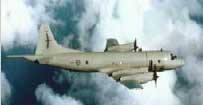P-3 Systems Upgrade
 Project purpose and history
Project purpose and history
The purpose of this project is to upgrade the mission, and communications and navigation systems, of six P-3 Orion aircraft.
In August 2000, Cabinet agreed that New Zealand 's future requirements for maritime patrol included a wide range of civilian functions (including surveillance for fisheries, resource management, conservation, immigration, customs, maritime safety, and search and rescue purposes).
Cabinet then agreed in April 2001 that the P-3 Orions be retained to:
- provide a long-range air patrol capability to meet civilian requirements;
- provide a contingent military capacity against surface targets; and
- contribute to the Government's foreign and security policy objectives in the South Pacific and the Asia-Pacific region.
Cabinet also agreed that a limited upgrade for the P-3 Orions be progressively implemented, using good quality commercial systems wherever possible (giving priority to those systems that will provide an appropriate and affordable set of sensors to perform these tasks).
The 2002 LTDP estimated that the P-3 Mission Systems Upgrade would cost between $151 million and $221 million, depending on which of three options was selected. Briefing documents supporting the plan noted that the P-3's communications and navigation systems also needed to be upgraded and that this was likely to be addressed as a separate project at the same time as upgrading the C-130 Hercules' systems.
On 4 December 2002, the Cabinet External Relations and Defence Committee authorised the Ministry to seek tenders from industry for all three Mission Systems Upgrade options and the immediate communications and navigation systems upgrade. This Approval to Commence acquisition was confirmed by Cabinet on 9 December 2002.
After the tender process, the Ministry recommended, in August 2004, that Cabinet select the Mission Systems option providing an upgrade that would meet all civilian requirements and the Government's defence policy objectives, along with a full communications and navigation upgrade and a flight deck trainer. The indicative total cost for the P-3 Systems Upgrade was NZ$354.3 million. The Ministry noted that, although this exceeded the LTDP and forecasts from previous Cabinet papers, it thought that the project could be managed within the overall funding envelope of the LTDP (that is, possibly by delaying the start of other projects in the LTDP).
Cabinet gave approval for the project to proceed and delegated responsibility for giving Approval to Commit to a contract to the Ministers of Finance and Defence, which occurred in September 2004. After negotiations, the total acquisition cost for the project was set at $373.1 million. The contract was signed by the Minister of Defence on 5 October 2004.
Cost and time frame changes for the P-3 Systems Upgrade
Costs and time frames at the Approval to Commence and Approval to Commit points, and figures forecast as at December 2007
| Approval to Commence point | Approval to Commit point | Ministry's December 2007 forecast to the Committee | |
|---|---|---|---|
| Cost (excluding GST) |
$170m-$221m for the mission systems upgrade, and $61m for communication and navigation systems upgrade, 1 so $231m-$282m in total | $373.1m for the mission and communication and navigation systems upgrades (includes estimated cost of forward cover) 3 | $373m |
| Time frame | 2006 for the first upgraded aircraft 1 2008/09 for the last upgraded aircraft 2 | The first modified aircraft was scheduled to be accepted into service in 2008, with the last at the end of 2010 3 | All aircraft delivered by early 2011 |
Sources
- We use the figures from the Cabinet approval of 9 December 2002. The Ministry uses the 2003 LTDP.
- Because there was no indication of timing for the last aircraft in the Cabinet approval, we have used the figure from the 2003 LTDP.
- We use the figure from the decision of the Ministers of Finance and Defence (as approved by Cabinet) of 23 September 2004.
Changes to costs and time frames as the project has progressed
| Approval to Commence point to the Approval to Commit point | Approval to Commit point to the Ministry's December 2007 forecast | Total change between the Approval to Commence point and the Ministry's forecast | |
|---|---|---|---|
| Cost (excluding GST) |
+$91.1m 1 | -$0.1m 4 | +$91m |
| Time (months) | +24 for the first aircraft 2 +18 for the last 3 | +3 for the last aircraft 5 | +24 for the first aircraft and +21 for the last |
Explanatory notes
- This is the difference between the upper limit of the estimated range at the Approval to Commence point ($282 million) and the Approval to Commit point ($373.1 million).
- This is the difference between the Approval to Commence point (2006 for the first aircraft - so we have assumed that this means the end of 2006) and the Approval to Commit point (2008 for the first aircraft - so we have assumed that this means the end of 2008).
- This is the difference between the Approval to Commence point (2008/09 for the last aircraft - so we have used the end of June 2009) and the Approval to Commit point (the end of 2010).
- This is the difference between the Approval to Commit point ($373.1 million) and the Ministry's December 2007 forecast ($373 million).
- This is the difference between the Approval to Commit point (the end of 2010) and the Ministry's December 2007 forecast (early 2011 - so we have assumed that this means the first quarter of the year).
